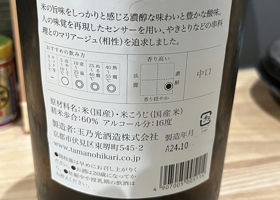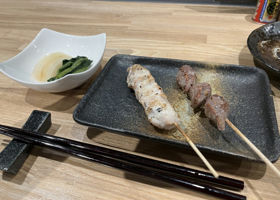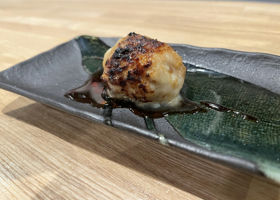



しんしんSY
Let's take a day off from drinking!
So I left the hotel and thought I'd have a light ramen.
But when I crossed the pedestrian crossing, I found a restaurant that caught my attention.
A yakitori restaurant with many bottles of wine lined up!
Let's take a peek!
We sit in the middle of the counter!
Looking at the menu, they have a little bit of Sake!
94?
It seems to be a sake associated with the skewers!
It's junmai ginjo, but the color is unbleached!
It's quite heavy!
But it seems to be designed by AI to go well with yakitori!
8 recommended skewers 📕
The manager and I got to know each other very quickly and talked about all sorts of things!
I'll be back again when I stay at this hotel 🏨.
I have an event on Saturday, so I have already made a reservation for tomorrow at my favorite restaurant, F-san!
extensive knowledge of the hotel and its facilities
The taste sensor "Leo", jointly developed by Keio University and AISSY Co.
Leo," a taste sensor with built-in AI (Artificial Intelligence), is used. It can quantify five basic tastes (sweet, salty, sour, bitter, and umami) on behalf of the human tongue.
The degree of compatibility can be calculated for alcoholic beverages (cold drinks) and alcoholic beverages (cold drinks). The degree of compatibility is calculated by quantifying the taste of sake (cold, room temperature, and heated sake) and yakitori (sauce and salt), and then combining them.
The value is calculated by the combination of these two tastes.
Results
Tare-flavored cold sake: 90.8
Salt-flavored cold sake: 89.2
Room temperature: 96.2
Room temperature: 88.1
Heated sake: 97.8
Heated sake: 87.5
Japanese>English